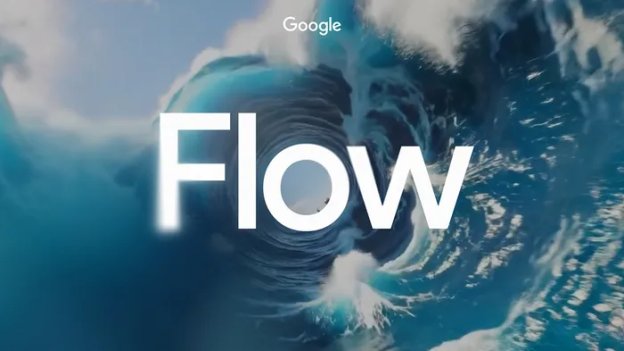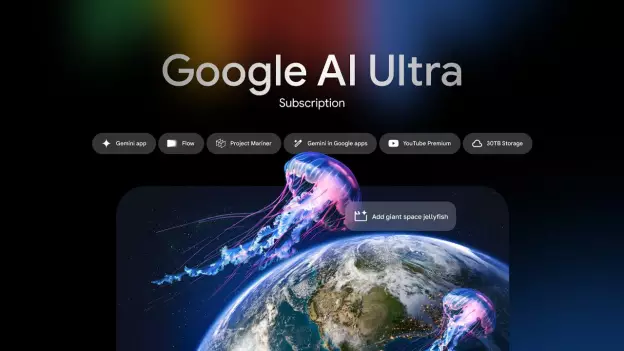Artificial Intelligence is rapidly reshaping the creative landscape, and nowhere is its impact more cinematic than in the world of filmmaking. Google has now entered the spotlight with Flow, a groundbreaking AI-powered video creation tool designed to turn simple text prompts into visually compelling, high-quality films.
Unveiled at Google I/O 2025, Flow combines the power of Google's advanced models - Veo for video, Imagen for audio and visuals, and Gemini for natural language processing - to give filmmakers, content creators, and storytellers an intuitive platform for bringing their ideas to life. With Flow, Google aims to democratize filmmaking, break down creative and technical barriers, and redefine how stories are told in the digital age.

In this article, we'll explore everything you need to know about Flow: how it works, the technologies behind it, its standout features, who it's built for, and the broader implications it may have for the future of film and content creation.
The Power Under the Hood: How Flow Works
At the heart of Google Flow lies a seamless synergy between three of Google's most advanced AI models: Veo, Imagen, and Gemini. Each of these AI models plays a critical role in transforming text prompts into rich, cinematic outputs. This AI trinity forms the creative engine that powers Flow's ability to generate high-quality films from scratch.
Veo 3 is the cornerstone of Flow's video generation capabilities. It goes far beyond typical AI animation tools by delivering photorealistic visuals, advanced understanding of real-world physics, and support for cinematic camera movements like pans, tilts, and tracking shots. Most notably, Veo now includes native audio generation, enabling ambient sounds, synced dialogue, and accurate lip-syncing-features that make the final output feel like a polished production rather than a digital experiment.
Imagen 4, Google's latest image generation model, complements Veo by handling the finer visual details. It's responsible for producing realistic textures, scene composition elements, and even typographic overlays. Think of Imagen as the artist painting the scene while Veo animates it.
Gemini, meanwhile, acts as the intelligent interpreter between human creativity and machine execution. It processes natural language prompts with nuance and depth, making it easy for users to describe what they envision - whether it's "a rainy street in Tokyo with neon reflections" or "a spaceship landing in a desert at dusk"- and ensures the system understands the intent with precision.
Together, these three models form a fully integrated system within the Flow platform. When a user enters a prompt, Gemini breaks it down and communicates it to Veo and Imagen; Imagen builds the visual components, Veo animates and synchronizes them with audio, and the final result is a coherent, stylized video output. This layered but fluid interaction creates a holistic filmmaking experience, allowing creators to focus on storytelling while Flow handles the technical complexity under the hood.
Key Features of Google Flow:
Google Flow isn't just a novelty - it's a fully equipped creative suite designed with filmmakers in mind. Whether you're a director, content creator, or first-time storyteller, Flow's features are crafted to simplify and supercharge the video creation process while giving you unprecedented control over the cinematic experience.
Intuitive Interface & Workflow
Flow offers multiple ways to bring ideas to life, tailored to different creative styles:
- Text-to-Video lets users input natural language prompts-like "a foggy mountain landscape at sunrise"-and instantly generate cinematic scenes.
- Frames-to-Video allows users to upload reference frames or storyboard-like visuals to guide Flow's output.
- Ingredients-to-Video gives more granular control, where users define specific elements like setting, lighting, characters, and mood to shape the outcome precisely.
Thanks to Gemini's advanced language capabilities, prompt engineering becomes intuitive and fluid - no need for coding or complex directives. A single, well-phrased idea can evolve into a fully realized scene.
Filmmaker-Centric Controls
Flow is built for storytellers, not just tech enthusiasts. It includes a suite of filmmaker-focused tools that put you in the director's seat:
- Camera Controls allow for meticulous control of virtual cinematography. Whether you want a dramatic dolly zoom, a sweeping crane shot, or a subtle pan, Flow lets you define how the camera moves within your scene.
- SceneBuilder makes editing and sequencing effortless. You can transition between scenes, extend shots, or insert new ones - all while maintaining logical and visual continuity.
- Consistency Across Scenes is a major technical leap. Flow can retain the appearance and behavior of characters, objects, and environments across different shots, ensuring that your story stays coherent from beginning to end.
- Asset Management tools let you easily organize your prompts, generated videos, and media assets. Whether you're juggling multiple versions or building a full narrative, everything stays neatly structured and accessible.
Native Audio Generation (A Game Changer)
One of Flow's most groundbreaking features is its integrated audio engine, powered by Veo and Imagen. Unlike other platforms that rely on third-party sound overlays, Flow generates environmental sounds, character dialogue, and lip-synced voice tracks within the same workflow. Whether it's the hum of a spaceship, footsteps on gravel, or a character whispering a line of dialogue, audio is not an afterthought, it's part of the storytelling fabric.
From Experiment to Revolution: The Evolution of Flow
Google Flow didn't appear overnight-it's the result of a thoughtful evolution that began with VideoFX, an experimental project launched in Google Labs. VideoFX served as Google's first foray into text-to-video generation, allowing users to create short clips based on prompts. While innovative, it was limited in scope and primarily served as a testing ground for what would eventually become something much more ambitious. With Flow, Google has taken the lessons learned from VideoFX and transformed them into a powerful, production-ready platform capable of handling more complex storytelling needs with cinematic precision.
A key part of this evolution has been Google's direct collaboration with professional filmmakers. Visionaries like Dave Clark, Henry Daubrez, and Junie Lau were invited behind the scenes to test early versions of Flow and provide hands-on feedback. Their insights - ranging from camera choreography to narrative continuity - have been instrumental in shaping the tool's user experience, ensuring that Flow speaks the language of real-world filmmaking rather than just experimental AI.
To showcase the capabilities of Flow and spark creativity in the community, Google has also launched Flow TV, a curated platform featuring content created using Veo and Flow. Each video not only highlights what the tool can achieve but also reveals the original prompts behind the scenes, giving viewers both inspiration and practical knowledge to create their own work. Whether you're exploring storytelling techniques or simply admiring the artistry, Flow TV serves as both a gallery and a guide for the next generation of AI-assisted filmmakers.
What is Veo?
Veo is Google DeepMind's cutting-edge AI video generation model that powers the cinematic backbone of Google Flow. Designed to understand and translate natural language prompts into high-quality video, Veo excels in creating detailed, dynamic, and realistic scenes that align closely with a user's creative intent. It has undergone significant evolution across its versions, each pushing the boundaries of what AI-generated video can achieve.
Veo (Original) The first version of Veo was introduced as an experimental AI model capable of turning text prompts into short video clips. It laid the foundation for understanding motion, scene composition, and visual consistency, focusing primarily on 1080p output and basic prompt comprehension. This version showed early promise in visual storytelling but lacked advanced audio, physics, and scene controls.
Veo 2 Veo 2 brought improved coherence across frames, better handling of object interactions, and enhanced cinematic quality. This version introduced more control over camera angles, movements, and lighting-making it more appealing to professional users. While audio wasn't natively integrated, Veo 2 significantly raised the bar for realism and continuity in AI-generated videos, making it a valuable tool for previsualization and concept development.
Veo 3 The latest and most advanced version, Veo 3, is a leap forward in AI filmmaking. It delivers photorealistic video output, understands complex prompts, and supports real-world physics like reflections, gravity, and material behavior. Most notably, Veo 3 includes native audio generation, allowing it to produce environmental sounds, character dialogue, and lip-synced speech directly within the video. This makes Veo 3 a game-changer for storytellers seeking an end-to-end solution for cinematic content powered entirely by AI.
Accessibility and Getting Started with Google Flow
Availability
Google Flow is currently available to users in the United States, with plans for a broader global rollout in the near future. To access Flow, users need to subscribe to either the Google AI Pro or Google AI Ultra plans. Once subscribed, they can log in through the Google Labs or Google AI Studio interface, where Flow is integrated into the suite of AI tools offered by Google. Interested users can join the waitlist or check for availability through their Google account.
Pricing & Tiers
Google offers two main subscription plans for those who want to use Flow:
Google AI Pro - $19.99 per monthThis package provides access to core generative tools, including Flow, with moderate monthly generation limits suitable for casual creators and small teams. This tier includes access to the basic version of Veo and Imagen, along with prompt-based video generation and editing features.
Google AI Ultra - $249.99 per monthIt is aimed at professionals and high-volume users. It includes higher usage limits, priority support, and early access to advanced capabilities, such as Veo 3's native audio features. This plan is ideal for those who want to explore the full potential of Flow and produce more complex, polished projects.

Who is Flow For?
Google Flow is built to empower a wide spectrum of users by removing traditional barriers to video creation. Whether you are crafting a cinematic short, an educational explainer, or marketing content, Flow offers tools that make high-quality video production more accessible than ever.
- Professional filmmakers who need a fast way to visualize scenes, storyboard concepts, or test creative ideas.
- Aspiring storytellers looking to experiment with filmmaking without investing in costly gear or learning complex software.
- Content creators aiming to produce polished, platform-ready videos for YouTube, Instagram, TikTok, and other social media channels.
- Educators and trainers developing engaging video content for online courses, classroom materials, or interactive lessons.
- Digital marketers seeking to generate eye-catching promotional videos, ads, or brand stories with minimal turnaround time.
- Creative teams and agencies who want to boost productivity and ideation by integrating AI into their content creation workflows.
The Impact and Future of AI Filmmaking
AI is reshaping the filmmaking landscape by making video creation more accessible and transforming creative workflows. This section explores the broad implications of Google Flow and what lies ahead for AI-powered storytelling.
Democratizing FilmmakingGoogle Flow represents a major step toward democratizing video creation by making professional-quality filmmaking accessible to a much wider audience. Traditionally, producing polished videos required expensive equipment, skilled crews, and lengthy post-production.
Flow lowers these barriers, enabling anyone with a creative vision to bring their stories to life quickly and affordably. This shift opens new opportunities for diverse voices and fresh perspectives to enter the filmmaking space, fostering greater inclusivity and innovation.
Industry Disruption vs. AugmentationThe rise of AI in creative industries has sparked an important debate: will AI replace human creators or serve as a powerful augmentation tool? Flow exemplifies the latter, acting as an assistant that accelerates and enhances the creative process rather than supplanting it.
By handling technical tasks like rendering visuals, syncing audio, and maintaining consistency, AI frees artists to focus on storytelling and artistic choices. This collaboration between human creativity and AI's capabilities is poised to redefine how films and videos are made.
Ethical ConsiderationsAs with all AI advancements, Flow's development brings ethical questions to the forefront. The models powering Flow are trained on vast datasets, raising concerns about data sourcing, consent, and representation.
Google acknowledges the need for responsible AI use, emphasizing transparency and fairness in both training and deployment. These considerations are part of a broader conversation about ensuring AI tools serve creators ethically and do not perpetuate bias or misuse.
What's Next?Looking ahead, Google's commitment to pushing AI boundaries in media suggests that Flow will continue to evolve rapidly. Future developments may include deeper integration of real-time collaboration, enhanced customization options, and improved multilingual and cross-cultural storytelling capabilities.
As AI filmmaking tools mature, they will increasingly become indispensable creative partners, transforming not just how stories are told but who gets to tell them and the stories they choose to share.
Conclusion
Google Flow marks a significant milestone in the fusion of artificial intelligence and filmmaking, unlocking new creative possibilities while making high-quality video production more accessible than ever. Its powerful features and intuitive design signal a future where storytelling is enhanced by AI, empowering creators of all backgrounds to bring their visions to life.
Explore Google Flow today, check out inspiring content on Flow TV, and imagine how AI can transform your own creative projects - whether you're a filmmaker, educator, or content creator ready to step into the cinematic AI age.
Frequently Asked Questions (FAQs)
Can you collaborate with others inside Google Flow on a video project? Currently, Google Flow does not offer real-time collaborative editing like Google Docs. However, creators can share projects and assets externally, and collaboration features may be added in future updates as Google continues to enhance the platform.
What formats and resolutions can videos be exported in from Flow?Flow supports exporting in high-definition formats, including 1080p and 4K, depending on the complexity of the scene and your subscription tier. Export options also include aspect ratio adjustments for different platforms like YouTube, Instagram, and TikTok.
Is there a limit to how many videos you can generate each month?Yes, generation limits are based on your subscription plan. Google AI Pro includes moderate monthly generation credits, while AI Ultra offers significantly higher limits. Once you exhaust your credits, you may need to upgrade or wait for the next cycle.
Does Flow support multilingual prompts and audio output?Flow's prompt system, powered by Gemini, supports multiple languages for input. However, audio output is currently optimized for English. Multilingual voice support is expected to expand in future iterations of Veo.
Can Flow be used commercially for client or branded content?Yes, Flow-generated videos can be used for commercial purposes, such as ads, branded content, or client work-provided you comply with Google's usage terms. Always check the licensing guidelines to ensure you're using generated assets appropriately in a commercial context.
Ready to Build the Next Big Thing in AI Filmmaking?
If you're inspired by tools like Google Flow and want to build your own AI-powered video generation platform, CISIN is here to help. Our expert team specializes in AI development, computer vision, natural language processing, and custom SaaS solutions that push the boundaries of creativity and technology. Let's turn your vision into reality. Contact us today to schedule a free consultation!


